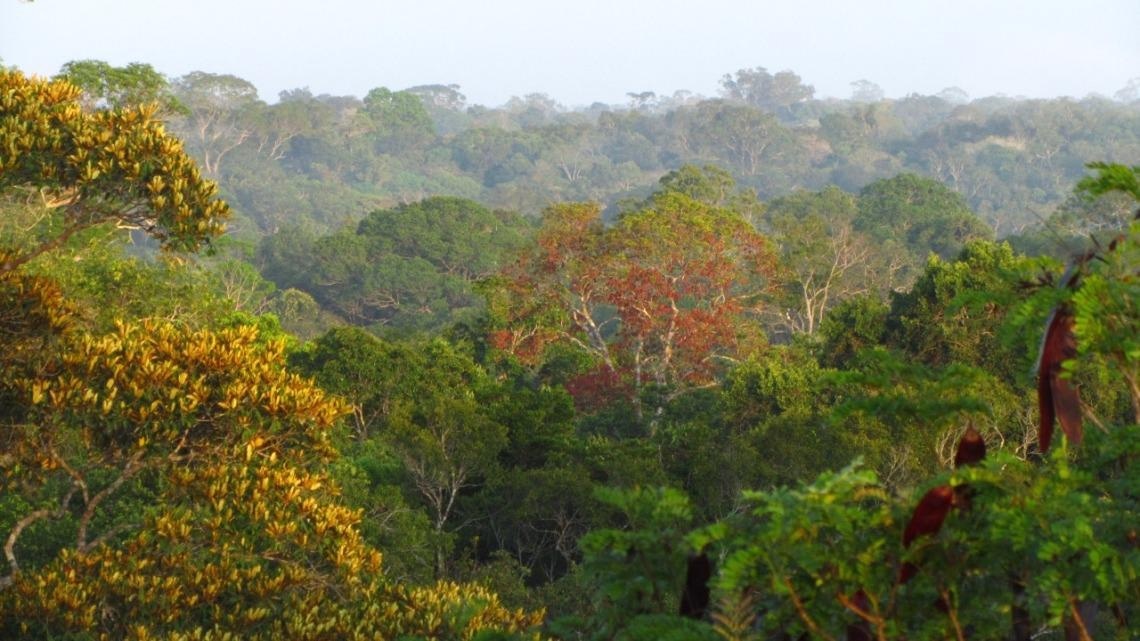For a long period, ecologists supposed tree rings were not present in tropical trees due to a lack of temperature and rain variations in the trees' surroundings.
 The Caxiuanã National Forest—one of the study's tree ring collection sites—at sunrise. The photo was taken atop of a tall tower to measure the weather and the flux of carbon dioxide going through the forest. Image Credit: Peter Groenendijk.
The Caxiuanã National Forest—one of the study's tree ring collection sites—at sunrise. The photo was taken atop of a tall tower to measure the weather and the flux of carbon dioxide going through the forest. Image Credit: Peter Groenendijk.
But in the last few decades, the development of growth rings has been established for hundreds of tropical tree species, which are susceptible to drought and typically undergo no less than a month or two of mildly reduced rainfall annually.
When researchers properly understand how tropical trees react to remarkably dry and warm environments, they can better estimate how these trees will be impacted by climate change.
As reported in the journal Nature Geoscience, new research, co-authored by University of Arizona scientists, has found that trunk growth of tropical trees has decreased in years when the dry season is warmer and drier than usual. The study describes the tropics in a way that also takes into account the subtropics—or anything between 30 degrees south latitude and 30 degrees north latitude.
The scientists also discovered that the impact of warmer and drier years is more intense in more warm or arid places in the tropics. This indicates that climate change may raise the tropical trees’ sensitivity to climatic variations. Temperatures at the study locations are predicted to increase by half a degree Celsius every 10 years in the future.
The study’s results help explain the large variations in carbon uptake by tropical plant life worldwide. Model simulations illustrate that during drier or hotter years, tropical plant life grows less and thus takes up less carbon dioxide from the air. But real measurements of plant growth have been missing until now.
Research illustrates that sluggish growth intensifies the hazard of topical tree death, so tropical plant life may more often become a source of carbon dioxide rather than absorbing this greenhouse gas that triggers climate change.
These (tropical) tree rings contain a wealth of information on the growth history of trees. In this study, we exploit that potential. For the first time, we get a pantropical picture of how tropical tree growth reacts to climate fluctuations.
Pieter Zuidema, Study Lead Author, Wageningen University & Research, The Netherlands
The research was a global collaborative effort that comprised University of Arizona dendrochronology Valerie Trouet, a professor in the Laboratory of Tree-Ring Research, and Flurin Babst, an assistant research professor in the University of Arizona School of Natural Resources and the Environment.
The results are based on a new international network, developed by the collaborators, of more than 14,000 tree-ring data series from 350 locations throughout 30 tropical and sub-tropical nations.
The researchers were amazed to learn that during the dry period, the climate had a more intense impact on the growth of trees than during the wet season.
"We know that photosynthesis and wood production of tropical trees generally peak during the wet season," Trouet states. "So, why do year-to-year fluctuations in trunk growth depend on the dry season? That surprised and puzzled us. Our explanation is that water is available for a longer period of time during years with wetter or cooler dry seasons. Put simply, the growing season is longer. This then leads to more trunk growth."
An important gap in tree-ring data has been filled by this research.
World maps showing the locations of tree-ring studies typically have a hole in the middle, in the tropics. Our network fills that tropical data gap.
Pieter Zuidema, Study Lead Author, Wageningen University & Research, The Netherlands
The tree-ring data from over 100 study sites has been added to the International Tree-ring Databank, the international database for tree-ring data.
In this way, the tree-ring data we've put together will be freely available for everyone.
Pieter Zuidema, Study Lead Author, Wageningen University & Research, The Netherlands
Journal Reference:
Zuidema, P., et al. (2022) Tropical tree growth driven by dry-season climate variability. Nature Geoscience. doi.org/10.1038/s41561-022-00911-8.